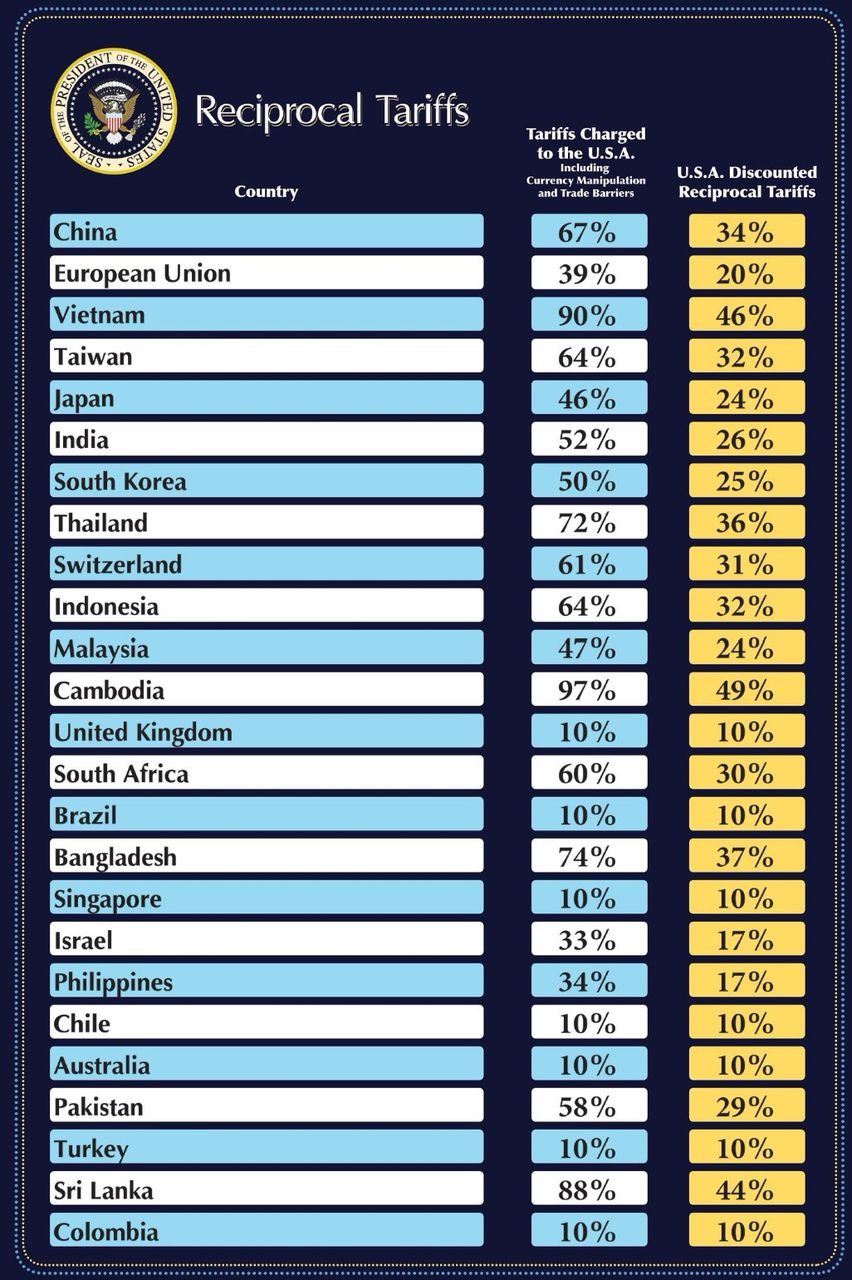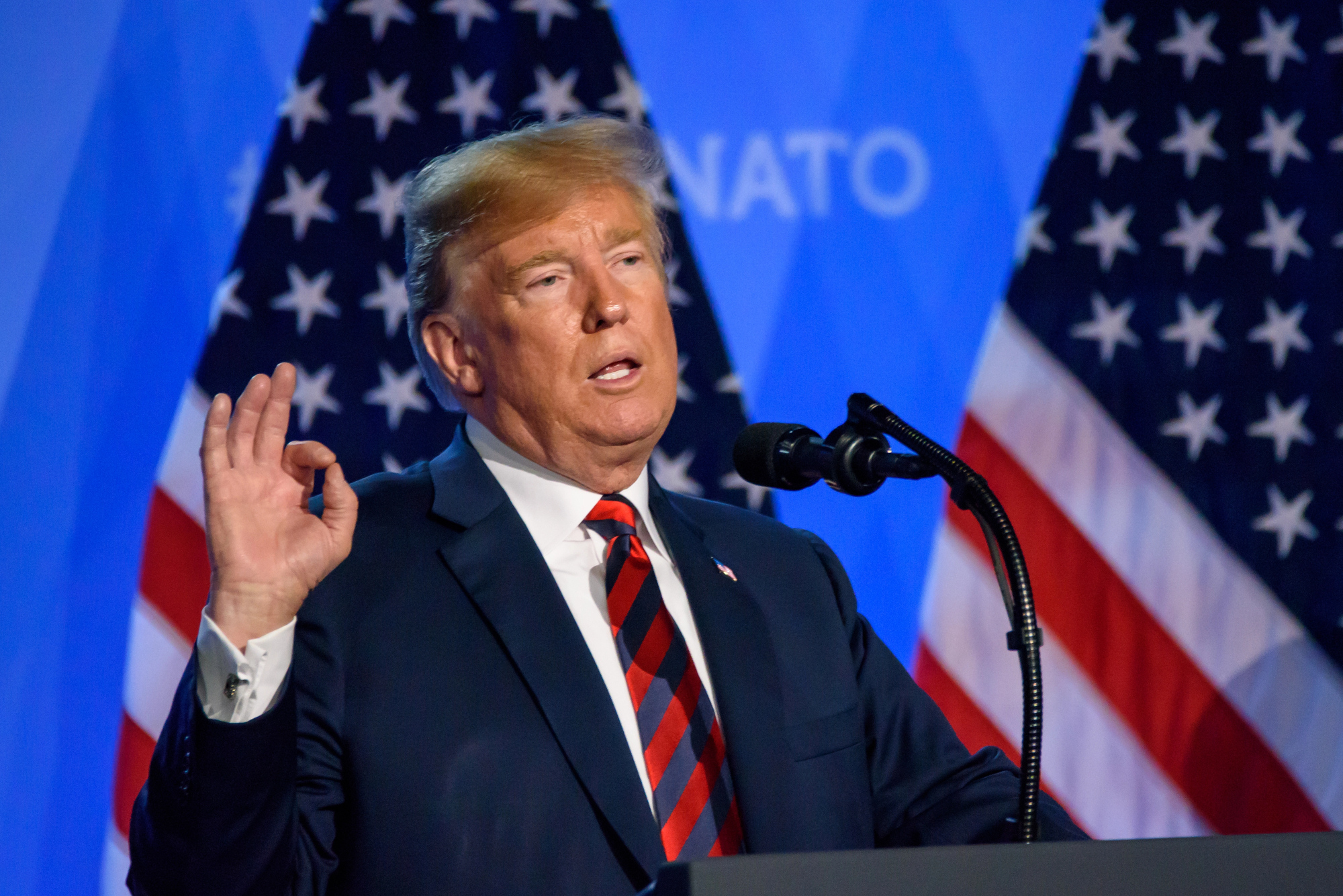No futurists, economist or even the best soothsays could have predicted the apocalyptic disaster
confronting world trade, which has flourished for five centuries, after US President Donald Trump
slapped the world with ‘punitive’ tariffs for having the gall to have trade surpluses with the
republic.
The tariffs that range from China’s 67% to Singapore’s 10%, with Vietnam hammered with 90%,
have had a disastrous effect on investor confidence worldwide.
A cursory look at the chart provided by the US Presidential office shows that Malaysia has a
lower tariff than the rest of Southeast Asia, at 24%.

But 24% is a terrible blow to local Small and Medium Enterprises, which constitute some 80%
of Malaysia’s industrial output.
It is not just very high but is punitive.
Bilateral trade with the US amounted to US54 billion last year, with a trade surplus in
Malaysia’s favour amounting to US25 million.
Stunned, Malaysian officials took a wait-and-see position on further developments
Maths gone wrong?
Malaysia’s central bank, Bank Negara Malaysia (BNM), expressed optimism in a statement on
Sunday, April 6, did not rule out negotiations with the Trump Administration on the
impending 24% tariffs.
Governor Abdul Rasheed Ghaffour said that there was “still room for negotiation, and we do not
know yet the full extent, timing, or magnitude of the tariff, nor the scope and which products will
be affected by the tariff.”
According to him, Malaysia’s inflation remained at between 2% and 3.5% and that BNM would
be closely monitoring the situation.
The tariffs came into effect on some countries with a 10% levy on April 5, with those with higher
rates kicking in on April 9.
Meanwhile, Prime Minister Anwar Ibrahim hit out at the US, claiming that Trump had got his
“math wrong”.
According to Anwar, the Madani Administration had rejected the US assertion that Malaysia had
imposed a 47% tariff on US imports.
The prime minister said that the formula for calculating the tariffs was fundamentally flawed,
with the resultant 24% tariff.
Without elaborating on how Trump got it wrong, some economists say that US officials did a
simple division and multiplication based on its trade deficits with countries. They simply
divided the percentage of its deficits with other nations by two!
Hence, Malaysia’s 47% trade deficit resulted in 24%, which is about half of the 47 trade deficit.
If only economics was so simplistic!
Method in Trump’s Madness?
Trump, at heart, is a businessperson and authored the bestselling The Art of the Deal. Any
businessperson will tell you that the basis of negotiations is equitable and profitable outcomes
for both parties before a deal can be clinched.
The key word here is ‘both’. Trump knows that negotiating with regional trade blocs,
comprising many countries, acting as one, is in a much stronger position than individual
nations coming on a one-on-one mission.
And the scramble has started. According to reports, some 50 countries have reached out to the
US to renegotiate the Trump tariffs.
Germany and Taiwan have been reported to have made moves to ask the US to downsize or cut the
tariffs.
The European Commission’s president, Ursula von der Leyen, has said that the EU is ready
with countermeasures against Trump’s tariffs.
In an interview with US news broadcaster ABC, the US National Economic Council Director,
Kevin Hassett claimed that more than 50 nations have been in touch with the Administration
to begin new trade talks.
Perhaps that’s the big picture in Trump’s hasty madness to introduce punitive tariffs on both
friends and foes.
But Trump knows that countermeasures by blocs and individual countries can only
foreshadow an apocalyptic future when no trade is possible, resulting in chaos of biblical
proportions.
Apocalypse Now, World War 3?
Last week, stocks across Asia and the US lost about 10% as investors reeled in shock at the
unforeseen magnitude and depth of the tariffs.
This week, shockwaves from the US tariffs are expected to affect markets with the uncertainty
of the global tariffs sinking in and taking effect on Wednesday.
Many national leaders have taken on a less combative stand, with a few deciding to bring
down their own taxes on US imports and products.
Has business-friendly Trump got what he wants? Will Trump be able to force the Federal
Reserve, traditionally anti-administration, to lower interest rates, which will be good for the
US business fraternity?
The coming weeks will tell if Trump’s preposterous mathematics will result in a zero-sum game
for the world. And harken World War 3.

